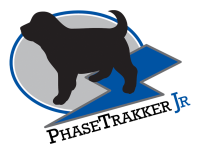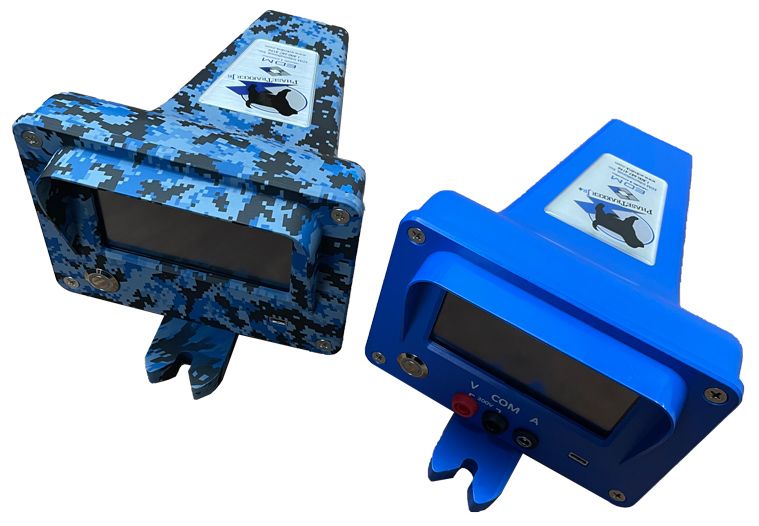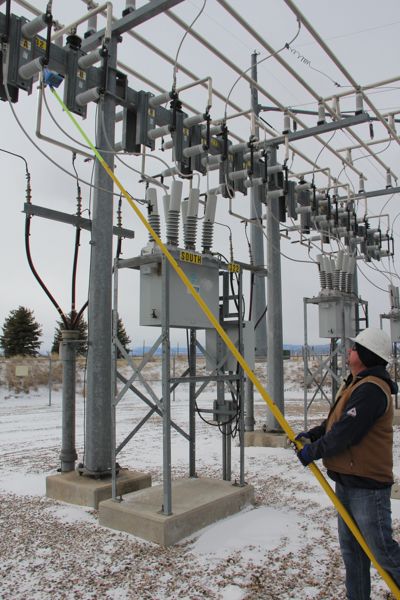
PhaseTrakker® Jr Standard
Outdoor phasing from 120V to 500kV
Available for the United States & Canada
Overview
A lightweight, compact version of the original AP30 PhaseTrakker, the PhaseTrakker JR is the perfect Phase ID tool for basic applications: OH, URD, Substations and Transformers from 120V to 500kV, in both direct and non-contact functionality. Compatible with all AP30 Reference units, the PhaseTrakker JR displays Phase and Phase Angle. A cinch to operate, its affordable price allows utilities to put one in every truck. Includes rugged carry case and portable pack, with both 120V AC and 12V auto chargers.APPLICATIONS
- Phase underground or overhead on 120V to 500kV circuits
- Test without de-energizing lines
- Balance loads to minimize system loss
- Reduce safety hazards and damage to equipment
- Identify and mark correct phasing for system mapping
- Ensure substations’ connections are phase correct
- Export results to GIS without de-energizing power lines (120V to 500kV).
The purchase of every PhaseTrakker field unit includes free access to regional base Reference Units located across the United States and Canada.
Reference Units are available for companies that wish to purchase their own base units. For more information, contact your local product representative, or EDM.
(800) 687-4196 |





Available in camo and blue
Sam Jack
970-204-4001
Diane Hurst
970-204-4001
Sandi Freeborn
970-204-4001
Videos
PHASETRAKKER Jr TRAINING
T&D WORLD PHASE TRACKING
FAQ's
- It’s common for underground cables to be mislabeled. This causes confusion during outages. Also, when two circuits need to be looped together, the labeling must be right. It’s inconvenient to de-energize a circuit to determine phasing. PhaseTrakker JR determines phasing on energized equipment.
- Long over-head lines can easily have mislabeled or uncertain phasing. This can result in substation problems such as delays in construction.
- When a utility wants to optimize load balance to reduce losses, it’s essential to know which phase is which, so loads can be transferred correctly.
- If a protective relay or revenue meter is working incorrectly, it’s vital to know where the phasing got mixed up.
- It’s common to have confused phasing through three-phase transformers. It’s important to determine the phasing to avoid trial-and-error transformer connections.
- Besides the issues associated with load balance and system optimization, inaccurate phase labeling can result in equipment damage and injury of personnel.
A set of Phasing Sticks is really just a high-range voltmeter that will determine if two phases match or not. Phasing Sticks can determine if two like-labeled conductors are actually different phases, but PhaseTrakker JR is required to determine which one is labeled correctly.
Yes. PhaseTrakker JR will display the phase angle of every voltage reading. This determines rotation.
PhaseTrakker JR will determine the phase of any energized conductor with at least 120V and has been used up to 500kV.
- Bare buswork as in substations
- Bare conductors such as distribution or transmission lines
- Taped buswork as used in switchgear
- Test points on 200A cable elbows
- Test points on 600A cable elbows
- Insulated bolts on the back of 600A T-body elbows
- Potential transformer secondaries. (It will work indoors as long as the Hotstick Unit is in sight of the Field Unit and the Field Unit is outside an open door.)
- 120V household outlet
- With the optional GPS/Cell antenna extension reel, the Field Unit can be taken into deep vaults or indoors to determine phasing.
Measurements have been routinely taken with a distance of 800 miles between the Reference and Field Units. At this distance it is common to get some seasonal power angle shift across the power grid, so it’s a good idea to verify occasionally on a known phase before checking unknown equipment. This power angle shift should be insignificant at the more normal maximum distances, say in the 300 mile range.
The Reference Unit takes a reading every second of the degrees to the next voltage sine wave zero crossing. When a Field Unit calls in, the Field Unit compares the local angle measurement to the cataloged value for that matching second. Since the GPS time is precisely the same at each location and since the phase “A” voltage is in phase at each location, the angle comparison determines how many degrees the Field Unit voltage is away from the Reference Unit, which then determines the phase identification as well.
- PhaseTrakker JR provides instantaneous absolute phase and phase angle identification, anywhere on an overhead or underground transmission or distribution system, (where live contact is possible.)
- With each purchase, the PhaseTrakker JR unit includes a free year of cellular service.
- In areas where no cellular service is available, PhaseTrakker JR can still record up to 1000 phase readings over a period of 30 days, which can be retrieved when cell signal is re-acquired. The system is configured to allow transferring the phase data to a laptop for use with mapping systems and databases.
- PhaseTrakker JR is portable, durable, and can be used independently from the work vehicle.
- PhaseTrakker JR features an easy to read LCD screen, and all calibration functions can easily be performed via convenient touch-screen process. Phase readings can be instantly shifted to adjust for Delta-Wye transformers.
- PhaseTrakker JR can be calibrated to communicate with 2 Reference units at different locations. As long as the Field Unit and Reference Unit are located on the same power grid, (regardless of distance,) phase identification can be achieved.
United States Representatives
Hover over location in the map for representative information or select the button below for full listing.
Canada Representatives
Hover over location in the map for representative information or select the button below for full listing.














